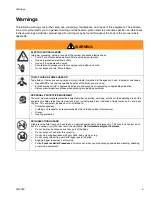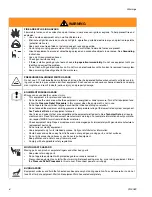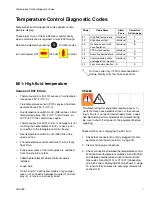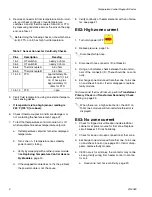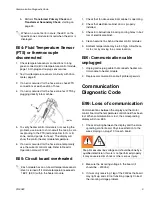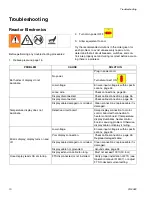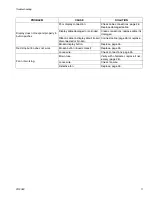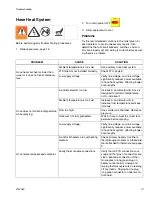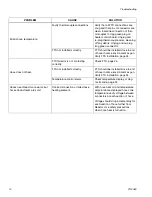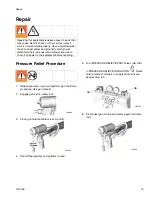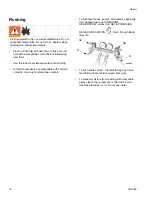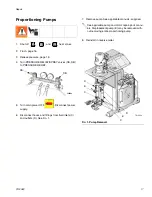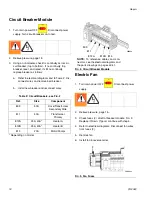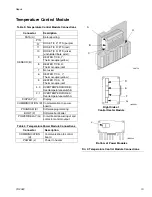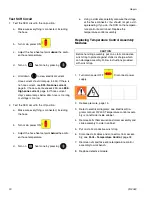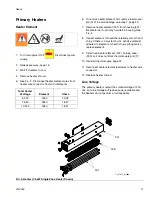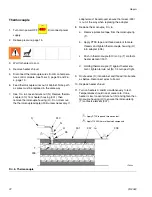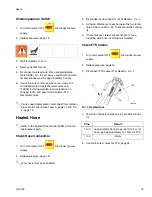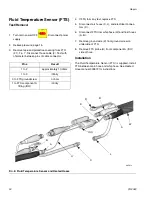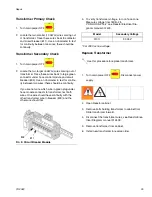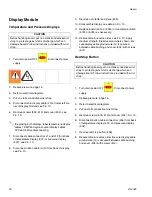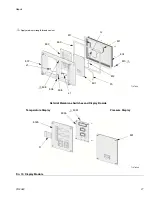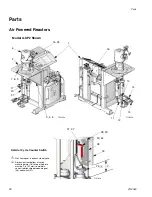
Troubleshooting
312408F
13
Hose Heat System
Before performing any troubleshooting procedures:
1.
Relieve pressure, page 15.
2.
Turn main power OFF
.
3.
Allow equipment to cool.
Problems
Try the recommended solutions in the order given for
each problem, to avoid unnecessary repairs. Also,
determine that all circuit breakers, switches, and con-
trols are properly set and wiring is correct before assum-
ing there is a problem.
PROBLEM
CAUSE
SOLUTION
Hose heats but heats slower than
usual or it does not reach tempera-
ture.
Ambient temperature is too cold.
Use auxiliary hose heat system.
FTS failed or not installed correctly.
Check FTS, page 9.
Low supply voltage.
Verify line voltage. Low line voltage
significantly reduces power available
to hose heat system, affecting longer
hose lengths.
Hose does not maintain temperature
while spraying.
A and B setpoints too low.
Increase A and B setpoints. Hose is
designed to maintain temperature,
not to increase it.
Ambient temperature is too cold.
Increase A and B setpoints to
increase fluid temperature and keep
it steady.
Flow too high.
Use smaller mix chamber. Decrease
pressure.
Hose was not fully preheated.
Wait for hose to heat to correct tem-
perature before spraying.
Low supply voltage.
Verify line voltage. Low line voltage
significantly reduces power available
to hose heat system, affecting longer
hose lengths.
Hose temperature exceeds setpoint.
A and/or B heaters are overheating
material.
Check primary heaters for either a
thermocouple problem or a failed ele-
ment attached to thermocouple, page
9.
Faulty thermocouple connections.
Verify that all FTS connections are
snug and that pins of connectors are
clean. Examine connection of ther-
mocouples to long green plug on
heater control board. Unplug and
re-plug thermocouple wires, cleaning
off any debris. Unplug and re-plug
long green connector on heater con-
trol board.
Summary of Contents for Reactor HT Series
Page 43: ...Parts 312408F 43 ...





